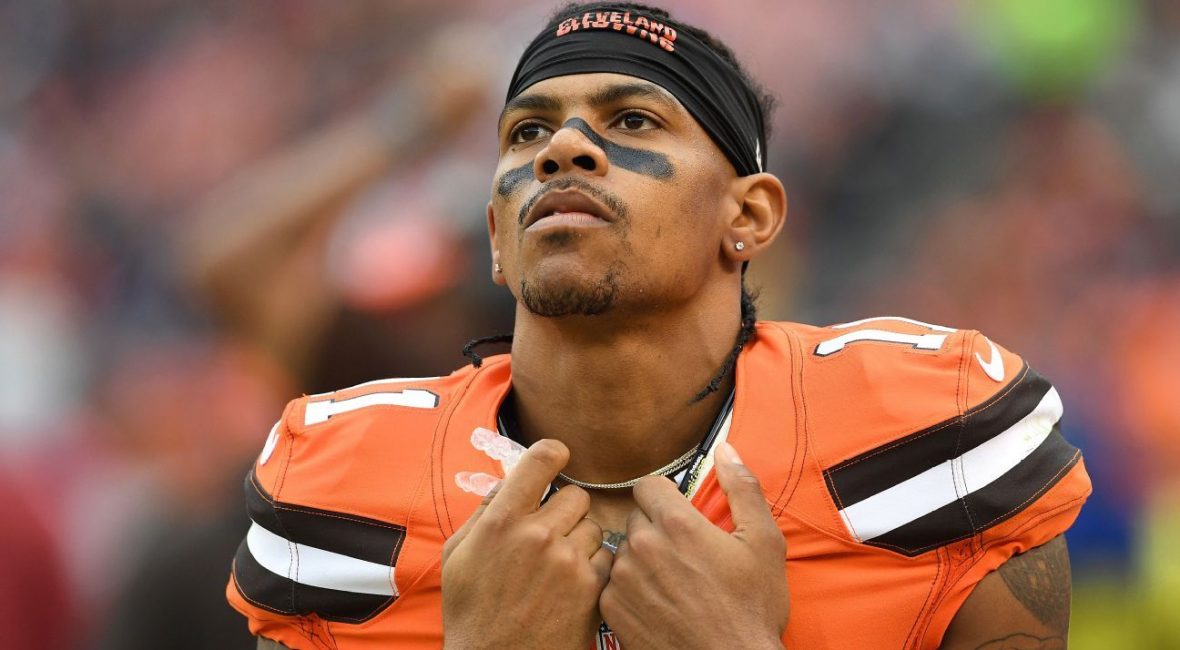Franchise tag would make Terrelle Pryor NFL's best-paid receiver in 2017

Silence can be golden, but the silence regarding the talks to keep Terrelle Pryor off the free-agent market seem mildly concerning.
Especially for those who want to see Pryor remain with the Cleveland Browns.
The team and Pryor’s camp both have maintained a public silence about the situation, with the only comments from Pryor at the end of the season that he told his agent he wanted to stay in Cleveland, but a deal has to be fair to both sides. That’s a point that has yet to arrive.
As the March 9 date for the start of free agency approaches, the deadline for placing the franchise tag on Pryor gets closer. That’s a move neither the team nor the player wants.
The nuances of the tag are explained here by ESPN’s Kevin Seifert. The bottom line is the tag essentially keeps a player with his team, and pays him very well. The teams don’t like to anger the player, who loses freedom, nor do they like the high salary that goes with the tag. Players don’t like their chance at not being able to decide where they want to play.
The Browns could put one of two tags on Pryor. The first keeps him from seeking offers. The second allows him to sign an offer sheet, and if the Browns don’t match, they receive two first-round draft picks.
The Browns would probably make that trade yesterday. No team is going to sign Pryor to that kind of contract and give up two first-round picks to get him. He simply has not played enough receiver to warrant that consideration.
Franchising Pryor would keep him in Cleveland at a price expected to be near $15.8 million. If he’s franchised, the Browns could continue to negotiate a long-term deal. Pryor also could sign the offer at any time.
Once he signs the franchise offer, he becomes the NFL’s highest-paid receiver, in terms of cash paid in 2017.
The Rams’ Tavon Austin right now is the due to receive $14.977 million in cash and bonuses, according to both ESPN’s Roster Management System and spotrac.com. Next are Dallas’ Dez Bryant ($13 million), Denver’s Demaryius Thomas ($12.5 million), Atlanta’s Julio Jones ($11.5 million) and Arizona’s Larry Fitzgerald ($11 million).
Pryor would pass them all, and the Browns would have to swallow the entire salary-cap cost. ?Cleveland, though, is one team for which that cost would not matter. The Browns are projected to have around $108 million in salary-cap room when free agency begins.
As Seifert points out, in the past five years, 47 players were franchised. Twenty-two signed the offer, 24 signed long-term extensions and one signed a modified deal — that was Jason Pierre-Paul, after his fireworks accident.
The advantage for the Browns is clear. They retain their top receiver for at least one year, which is important, given the lack of depth at the position in general. If Pryor leaves, the Browns are suddenly barren at receiver.
The team also gets another year to see Pryor at the position and assess his long-term value. The fact that no deal has been agreed to indicates the team and player disagree about that value.
The Browns have used the tag twice, for place-kicker Phil Dawson. Though Dawson was more than deserving, the fact that the team used it on a kicker speaks to its talent in recent years.
Dawson was and is the ultimate professional, and even he didn’t appreciate being tagged. Players simply don’t like it. A player like Pryor worked his entire life for the chance he has now — to be rewarded by the team that gave him a chance or to test his value on the market, where teams typically are overly generous.
Having that freedom revoked usually does not go over well. It’s tough to project how well Pryor would do on the market, but at 27, he might be at his peak in terms of marketability.
ESPN’s Roster Management System analyzes age and production, and it shows 27 is when a receiver hits his peak. He then maintains a high level through the age of 31. At 32 is when productions starts to drop.
The other risk for a player is injury. If a player has a serious injury while on a one-year contract, his bargaining power decreases.
However, the tags were negotiated by the players and management in collective bargaining, so players must live with them.
In Pryor’s case, he’d live with it for a year. At least he’d live well.





